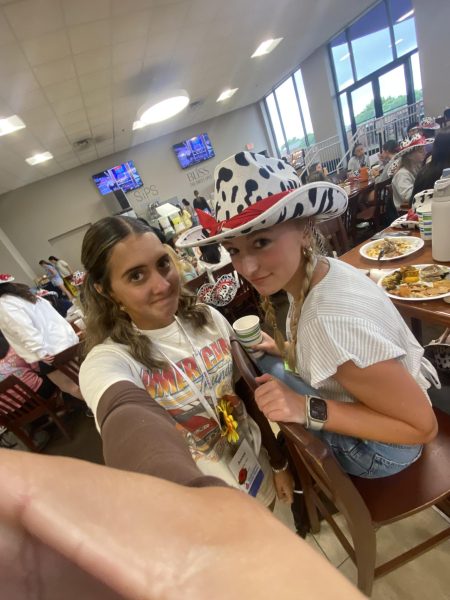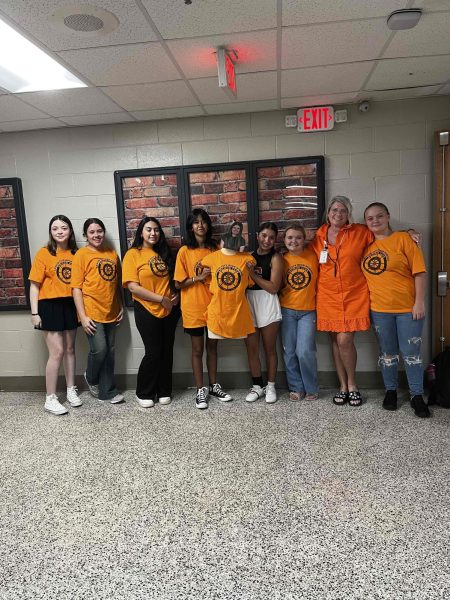The Price of it All
It was a chilly October day, I had just gotten home from school and was lounging on the couch. I was doing what most teens do when they get home, checking my social media platforms. I typically spend a lot of time on instagram, and I had made my way onto my instagram browser page when a post caught my eye. It was meme as usual, I continued to scroll through to see other posts, and I found one that hit close to home. It was a post bringing to light the insulin problem facing our country, pointing out the cost of insulin now compared to just a few years ago. It was the first time I had ever seen a post like this on my feed, a message that meant the world to me. It was being projected through a younger demographics platform, from someone, who was most likely not a diabetic but still found this news compelling. This post meant a lot to me because I am one of the many people who uses insulin everyday to survive. I am a type one diabetic.
I am just one of the 1.25 million people, in the United States, who suffers from this complicated disease. It’s an illness that requires a lot of monitoring, supplies, and strength just to get through one day. Although the cause is still unknown, type one diabetes occurs when the body attacks itself and is no longer able to produce, the hormone, insulin. Without insulin, diabetics can suffer from serious long term complications, the ones that have been drilled into my head are blindness and amputations. However, the more immediate side effects can still be just as serious, such as seizures and death even if it has only been 24 hours since receiving a dose. It is a scary thing to be faced with, and the people who can’t afford their insulin are staring the consequences right in the eyes.
Type one diabetes is typically diagnosed at adolescence, but adults can be diagnosed with it too. It is assumed that 40,000 people each year, in the US, are diagnosed with type one diabetes. My diagnosis was 12 years ago, March 7th 2007, I was just 5 years old. My mom recognized the first few signs that something was off immediately, but she had just been laid off from her job, and neither one of my parents had health insurance, so we waited. As soon as she got a new job she took me to the doctor, and I was diagnosed. It was shocking, no one else in my family had it, and it was scary, almost surreal, but reality set in for her with the medical expenses. It was 12 years ago but she still remembers the insane costs to keep me alive. She had to choose to buy insulin over paying the house payment, plus the expenses for supplies. It was hard, and it seems like this should be becoming more and more rare, but it is becoming common in this country.
It was hard to pay for insulin and supplies 12 years ago, and even harder now. The price of insulin nearly doubled from 2012 to 2016 and the average price of insulin has increased from 13 cents per unit to 25 cents per unit. The average diabetic uses 60 units per day, but the amount depends on the individuals needs, so some could use 60 units in a day and some could use 150 in a day. Also stress, sickness, menstrual cycles, and many other things can cause someone to need more insulin. Due to the steep prices people have had to take more extreme measures to make their vials last longer. Many will ration the small amounts they have left, just to make it till their next bottle, or until they have enough money to buy a new one. Doing this is really dangerous and has resulted in several deaths.
One person who lost their life to the high cost of insulin was Alec Holt. He was 26, the age cap to stay on a parents health insurance, and had just moved out to be on his own. His new monthly cost for insulin and supplies was $1,300, and he was struggling. He decided to not tell his family about his trouble paying for the life sustaining products, to save himself from the embarrassment. He instead rationed what he had and what he could afford. Alec died, soon after he started implementing this idea, from a diabetic coma. His mother now advocates for others in similar situations in her son’s memory. Alec is just one of thousands that have trouble affording insulin, and among several who have lost their life.
It’s scary to think the people have to forego life-sustaining drugs because of how high the price for it is. It’s also scary to think how many more deaths will result from this if change isn’t made. The health care system in our country has doomed so many, and continues. I’m scared of what the future holds, I’m scared that the price of my illness will affect even more aspects of my life. I didn’t ask for this disease, and I’ve never wanted it to get in the way of my life, more than it already does. I know everyone else who has a medical issue feels the same way. No one wants to pay exorbitant amounts of money for something they didn’t ask for.
I appreciate the recognition of the post I found on Instagram that day, but I don’t want to see anything like that again. This shouldn’t be an issue, it shouldn’t be a taking lives, it is time for change. My hope for the future is that our healthcare system will be changed and adapted for the people, not for the convenience of the drug producers or government. I never want to see another innocent person, who didn’t ask for an illness, to die because they can’t keep up with the cost. 




